Located at an altitude of over 2,400m above sea level, 1,700-hundred-year-old tea trees in Mo Si San commune grow in special weather, bringing unique values rarely found anywhere else.
Mo Si San is a highland commune in Phong Tho district, Lai Chau province with a population of 2,500 people and the Dao account for over 90%. Mo Si San is naturally bestowed with Shan Tuyet tea which has a unique flavor as well as color. Mo Si San is considered the largest area planted with ancient tea in the province.
Shan Tuyet tea is considered a "treasure" of the Dao in Mo Si San. Tea buds are covered in a smooth and thick layer of fur. When tea buds are dried, the fur will turn white and the buds look like they are covered with snow.
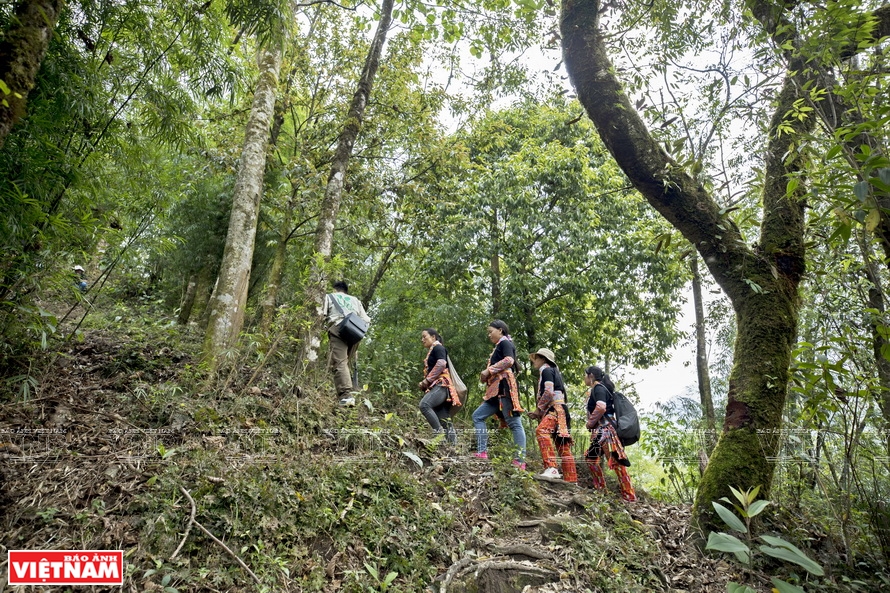
Tea pickers have to go through the bamboo forests, ancient tree forests and long and high slopes to enter the tea growing zone. Photo: Tat Son / VNP
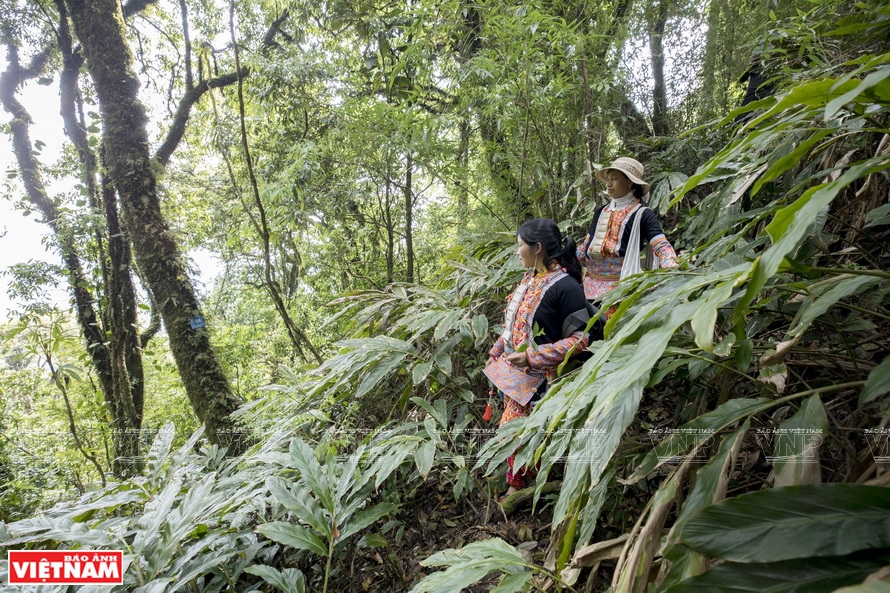 Located at an altitude of over 2,400m above sea level, tea trees in Mo Si San commune grow in special weather. Photo: Nguyen Luan / VNP
Located at an altitude of over 2,400m above sea level, tea trees in Mo Si San commune grow in special weather. Photo: Nguyen Luan / VNP
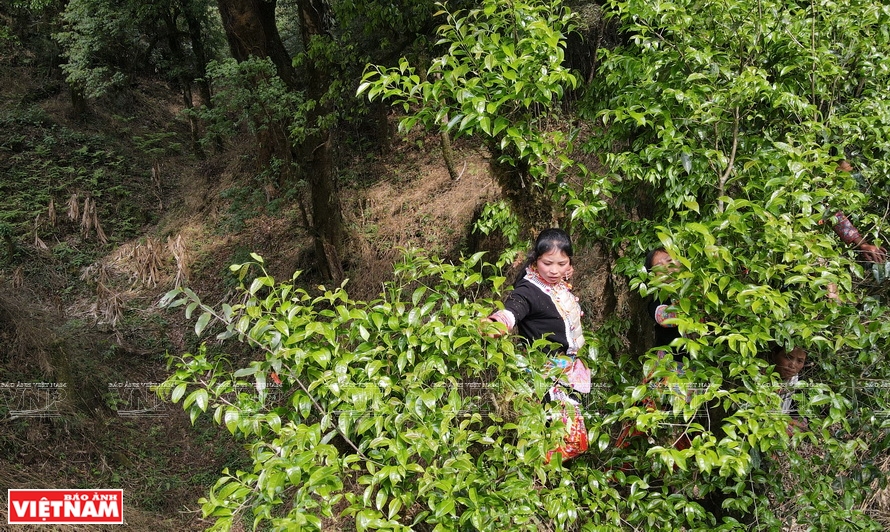 To harvest tea leaves, tea pickers have to go through many arduous steps. Photo: Nguyen Luan / VNP
To harvest tea leaves, tea pickers have to go through many arduous steps. Photo: Nguyen Luan / VNP
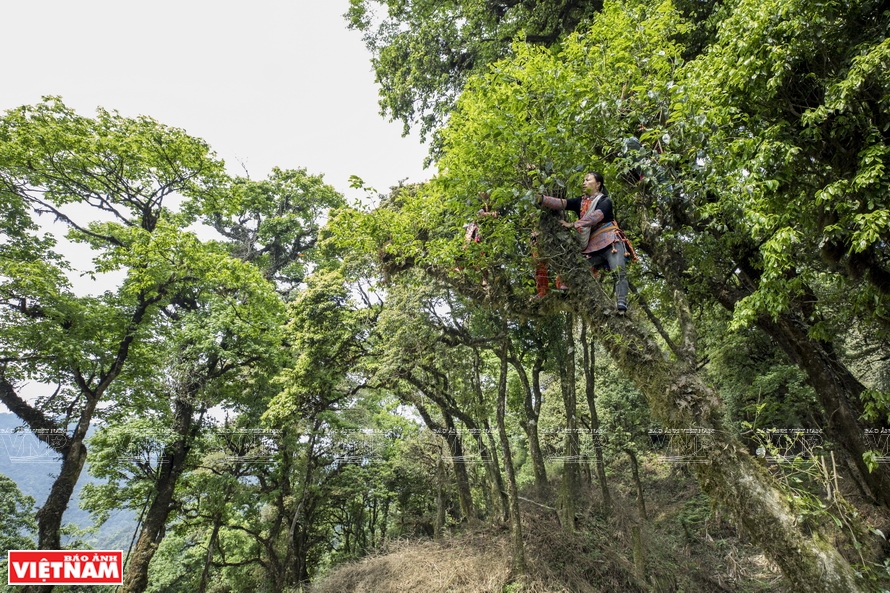 Mo Si San is considered the largest area planted with ancient tea in the province. Photo: Tat Son / VNP
Mo Si San is considered the largest area planted with ancient tea in the province. Photo: Tat Son / VNP
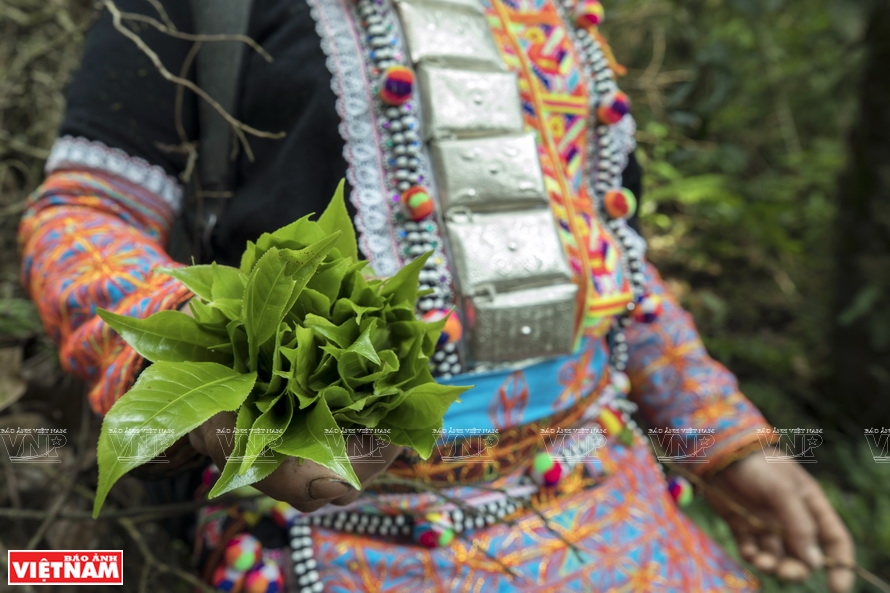 Tea trees in Mo Si San have unique values rarely found anywhere else. Photo: Tat Son / VNP
Tea trees in Mo Si San have unique values rarely found anywhere else. Photo: Tat Son / VNP
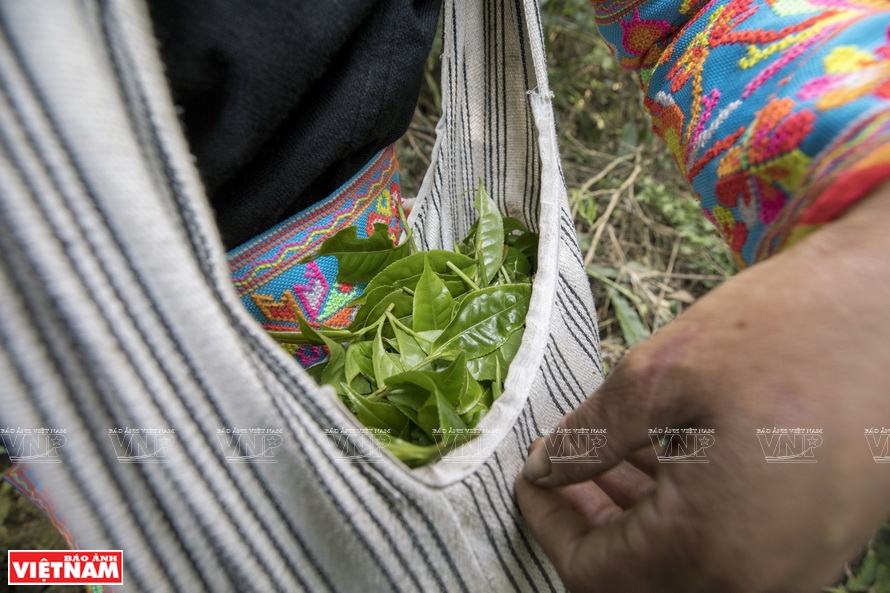 A tea picker in Mo Si San collects 4kg of fresh tea leaves per day. Photo: Tat Son / VNP
A tea picker in Mo Si San collects 4kg of fresh tea leaves per day. Photo: Tat Son / VNP
 The ancient tea-bud with two top leaves will make a perfect tea flavor. Photo: Tat Son / VNP
The ancient tea-bud with two top leaves will make a perfect tea flavor. Photo: Tat Son / VNP
|
According to data that the local authorities released, the tea growing area of Mo Si San has 1,700 ancient tea trees. To harvest tea leaves, tea pickers have to go through many arduous steps. Every day they have to get up early in the morning to prepare rice balls, and then go through the bamboo forests, ancient tree forests and long and high slopes. After more than three hours, tea pickers can enter the tea-growing zone.
Cheo Phu Duyen, Chairman of Bien Cuong cooperative in Mo Si San said that the establishment of the cooperative helps to control the quality of fresh tea buds. Equipped by a system of modern machinery and processing lines, Bien Cuong cooperative has created a variety of tea products, selling at prices up to millions of dong per kilogram of dry tea. For example, green tea is priced at 2.5 million dong (108 US dollar) per kg; red tea and royal tea cost 3 million dong (130 US dollar) per kg. White tea costs up to tens of millions of dong for each kilogram because the harvesting and processing stages require more meticulous and elaborate processing time than other types of tea.
Bien Cuong cooperative has created a chance for local people to register their ancient tea crops. If any household guarantees the quality and condition of tea leaves, the cooperative buys at a stable price of 30,000 dong (1.3 US dollar)/kg.

Shan Tuyet tea processing stage at Bien Cuong cooperative. Photo: Nguyen Luan / VNP
 Shan Tuyet tea processing stage. Photo: Nguyen Luan / VNP
Shan Tuyet tea processing stage. Photo: Nguyen Luan / VNP
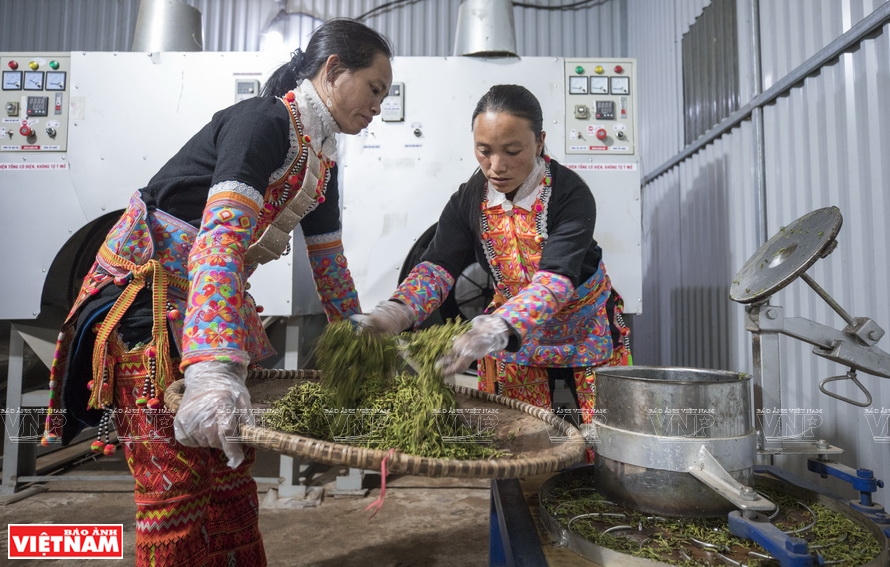 Making Shan Tuyet tea in Mo Si San. Photo: Nguyen Luan / VNP
Making Shan Tuyet tea in Mo Si San. Photo: Nguyen Luan / VNP
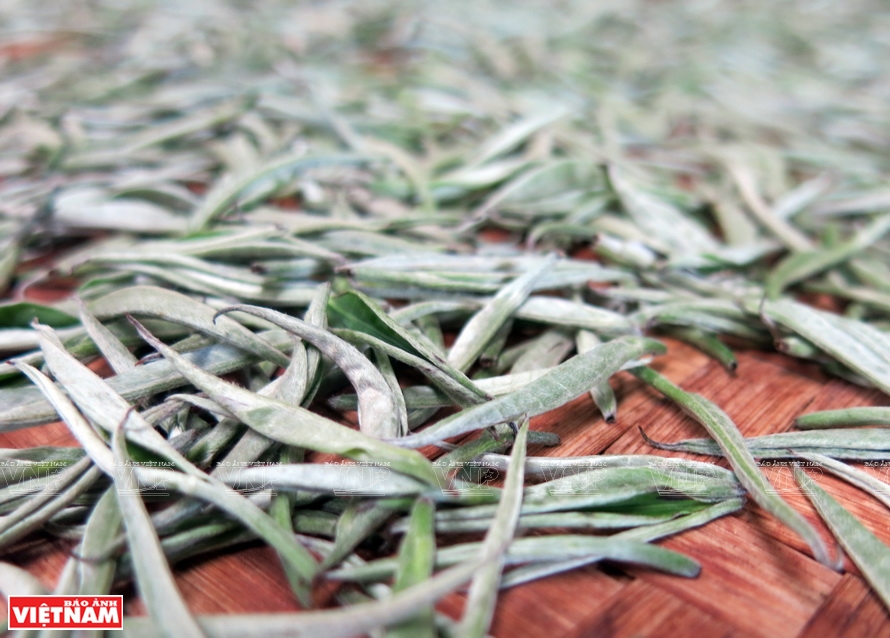 When tea buds are dried, the fur will turn white and the buds look like they are covered with snow. Photo: Tat Son / VNP
When tea buds are dried, the fur will turn white and the buds look like they are covered with snow. Photo: Tat Son / VNP
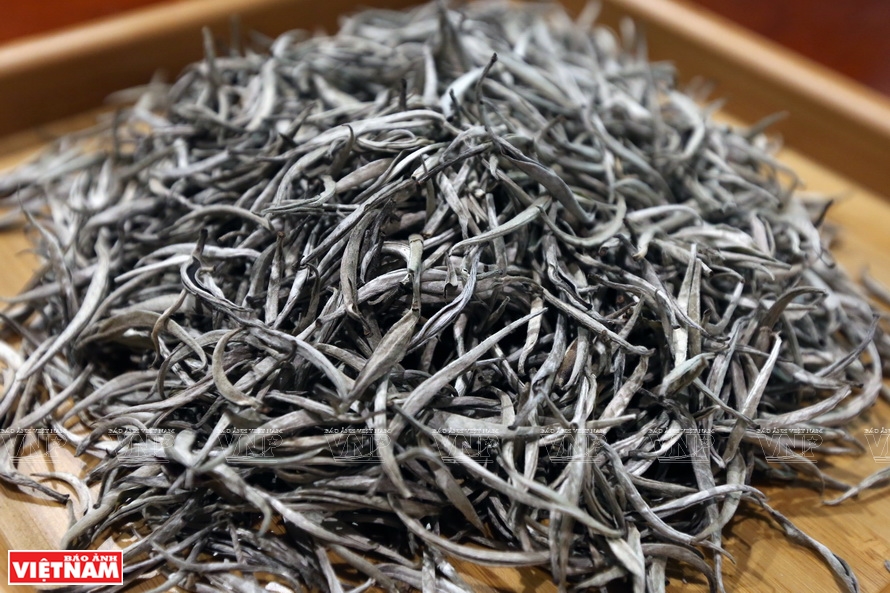 White tea products of Bien Cuong cooperative. Photo: Tat Son / VNP
White tea products of Bien Cuong cooperative. Photo: Tat Son / VNP
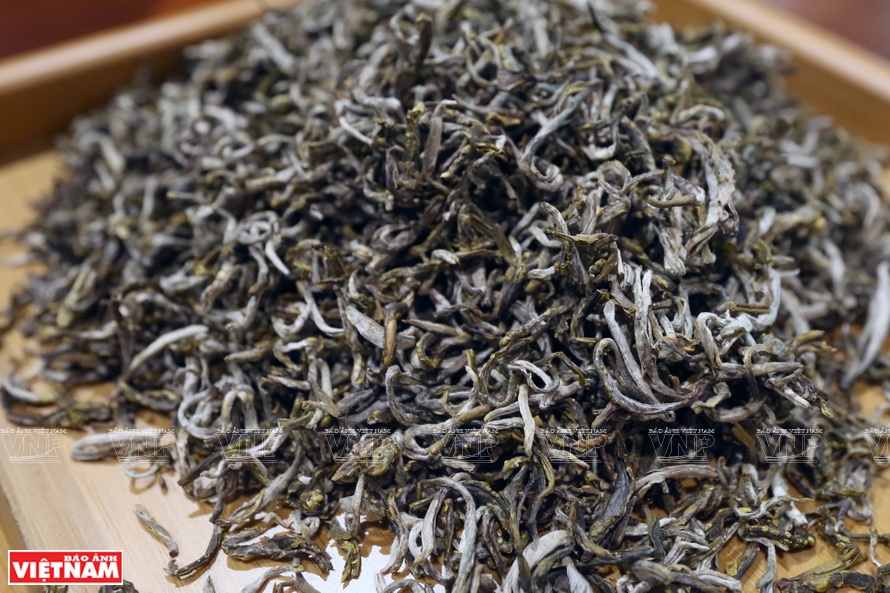 Royal tea products of Bien Cuong cooperative. Photo: Tat Son / VNP
Royal tea products of Bien Cuong cooperative. Photo: Tat Son / VNP
|
The cooperative currently has 4 products including white tea, green tea, red tea, and royal tea, which all attract consumers.
Shan Tuyet tea trees have made their name at the first stage. In the future, coordinating with specialized departments and divisions of Phong Tho district, the People's Committee of Mo Si San will implement the technical measures to preserve and develop tea areas safely and sustainably and manage and protect ancient tea brands in association with the protection of tea forests in the area.
By Tat Son, Nguyen Luan - Translated by Hong Hanh